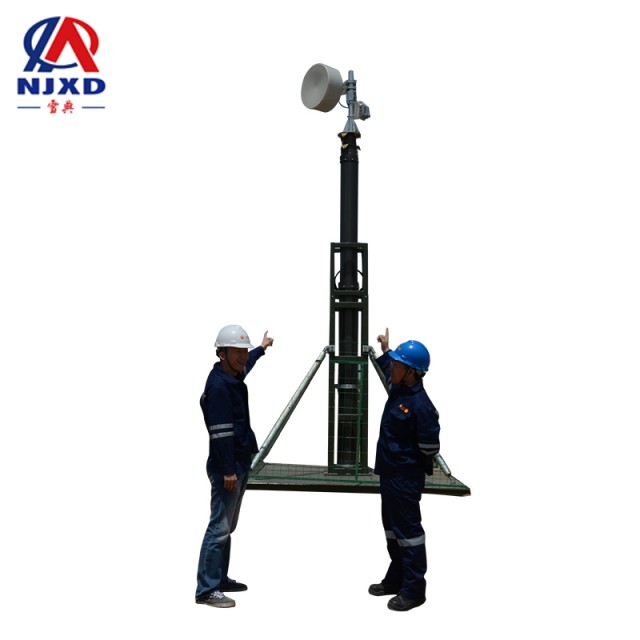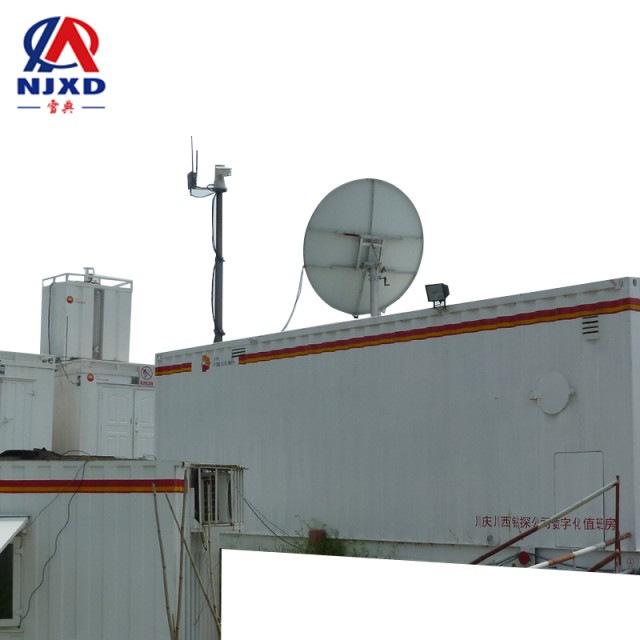NEWS
Main Features and technical principles of microwave lifting communication
Time:2021-07-19 View:

Main features
Microwave Communication has good anti-disaster performance. Microwave communication is generally not affected by natural disasters such as floods, wind disasters and earthquakes. However, microwaves are transmitted over the air and are easily interfered. The same frequency cannot be used in the same direction on the same microwave circuit. Therefore, the microwave circuit must be constructed under the strict management of the radio management department. In addition, due to the characteristics of microwave rectilinear propagation, high-rise buildings cannot be blocked in the direction of radio beam. Therefore, urban planning departments should consider the planning of microwave channels in urban space so that communication is not affected by high-rise blocks.
Large bandwidth capacity
Traditional microwave products generally refer to microwaves in the traditional frequency range of 6GHz to 42GHz. Wireless technologies such as XPIC,MIMO and CA can be used to continuously multiply the transmission capacity under limited frequency resources. Through the simple superposition of RF units, as well as the air port physical link convergence or link layer convergence technology, the microwave rate in traditional frequency band can reach 10Gbit/s, and the new generation E-band microwave single air port exceeds 10Gbit/s. Meet the requirements of the latest 5G mobile communication return rate.
Supports multiple transmission services
Supports PDH, SDH, Ethernet, and IP services. It can well meet the bandwidth requirements of 2G, 3G and 4G mobile services in the current network and the capacity requirements of 5G mobile services to be commercially available in the future.
Low latency
The excellent feature of ultra-low latency of microwave transmission can not only meet the requirements of 2G, 3G and 4G mobile networks, but also meet the lower latency of 5G mobile (such as unmanned driving, intelligent manufacturing and telemedicine) application requirements.
Provides high-precision time synchronization
1588v2 provides accurate frequency and phase clock synchronization for base stations, and can provide full network clock for TDD mobile communication system, reducing the installation and maintenance costs of mobile networks.
Rapid Deployment
The all-outdoor solution of group microwave equipment does not require transmission fiber and data centers. The installation and deployment are simple and quick, meeting the requirements of 4G and 5G dense miniaturization and rapid deployment. 5G mobile base stations further shorten the station building distance and increase the number of base stations per square kilometer. Microwave transmission as a return solution can greatly save time for the deployment of mobile networks.
Anti-disaster and anti-man-made damage
Compared with optical fiber transmission, microwave communication is through wireless signal transmission in the air, which can prevent man-made damage such as digging, explosion-proof, and natural disasters such as earthquake and fire, when the microwave transmission is damaged, the communication link is restored quickly. In areas where natural disasters and optical fibers cannot reach, microwave transmission can be used as a transmission network for emergency mobile communication.

Technical principles
Because the propagation characteristics of microwaves in the air are similar to those of light waves, that is, straight forward, they will be reflected or blocked when they encounter blocking, so the main way of digital microwave communication is line-of-sight communication. Due to the great influence of the fading of Earth surface and space transmission, to carry out long-distance communication, relay transmission is required, that is, to relay and forward signals many times (including frequency conversion, mid-range and other links), this digital communication mode is also called terrestrial digital microwave relay transmission mode. Terminal stations are located at both ends of digital microwave transmission lines. Relay stations are stations with the largest number of digital microwave transmission lines. Generally, there are several to dozens of stations. Every 50km or so, a relay station needs to be set up, the main function of relay station is to receive digital signals, amplify them, and then transfer them to the next relay station, and ensure the quality of transmitted digital signals. Therefore, digital microwave transmission is also called digital microwave relay transmission. This long-distance digital microwave transmission trunk can be transmitted to thousands of kilometers through dozens of relays and still maintain high transmission quality.
As far as the performance of microwave communication is concerned, the characteristics of digital microwave communication can be summarized into six words: Microwave, multi-channel and relay.
"Microwave" refers to the microwave frequency band, including decimetre wave, centimeter wave and millimeter wave. The width of microwave frequency band is l000 times of the sum of long wave, medium wave, short wave and ultra high frequency. The microwave frequency is not affected by atmospheric interference, industrial interference and sunspot changes, and the communication reliability is relatively high. Due to the high microwave frequency, the antenna size is relatively small, and it is often made into a surface antenna with high antenna gain and strong directivity.
"Multi-channel" means that microwave communication not only has a wide total frequency band and a large transmission capacity, but also has a wide bandwidth of its communication equipment. For example, for a 4000MHz device, its passband is estimated at l%, which can reach 40MHz. The total frequency spectrum of 960 telephones simulating microwave is about 4MHz bandwidth. It can be seen that if a set of microwave receiving and sending equipment can transmit, the number of channels is quite large. Due to the wide bandwidth occupied by digital signals, the capacity of the digital microwave communication equipment is still quite large after selecting the appropriate modulation mode.
Relay because the electromagnetic wave in the microwave band is along the line-of-sight range of rectilinear propagation, the communication distance is generally 40~50km. Considering the bending of the Earth's surface, when conducting long-distance communication, relay transmission must be adopted. The originating signal can reach the receiving end only after being forwarded several intermediate depot times.

CATEGORY
NEWS
- System structure of microwave communication of lifting antenna
- Main Features and technical principles of microwave lifting communication
- Main types of antenna telescopic mast microwave communication
- Scattering communication of lifting antenna bracket
- Emergency Communication Command car infrared communication lifting